By Adrian Bloom
Originally published in MHS Leaflet, February 2022
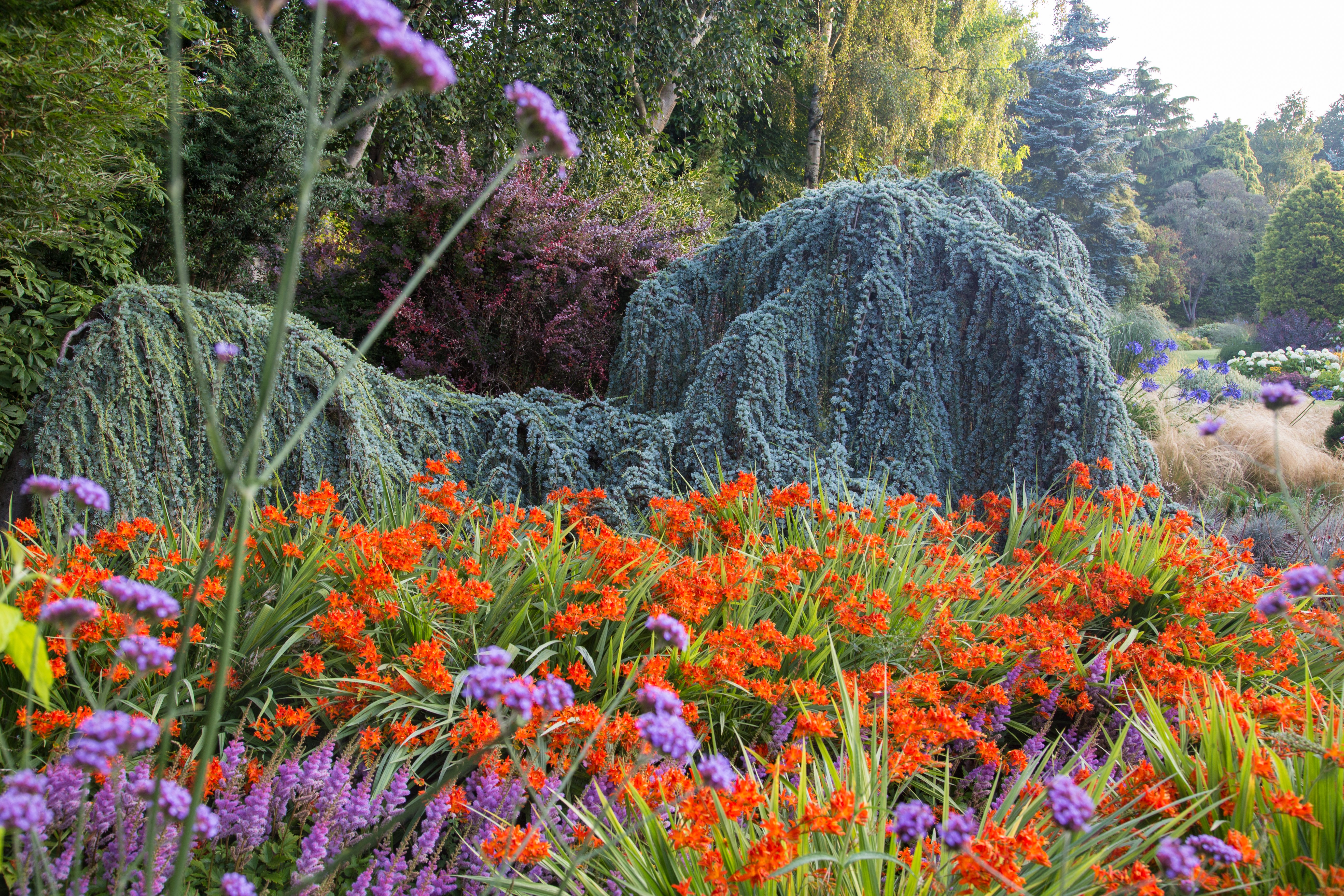
We all have dreams when we are young depending how far back we go. How about a professional footballer ….or Elvis Presley both of which were on my list? Then, usually well before approaching 20 years old reality has to be faced. Perhaps like my father who knew from aged 12 that he wanted to be a nurseryman, it was fortunate in giving him an early start.
But when I left school at 18, gardening or nurseries had no great appeal for me.
So, I took out an immigration visa and made my first Atlantic crossing on the good ship, the 26,000 ton liner Ivernia across the Atlantic. I arrived in New York (6 days, 17 hours and 42 minutes later through violent storms) on the 9th of March. After 18 months doing various jobs in Maryland, Vermont, Michigan, Colorado and California (another story) I ‘failed’ mainly through my lack of motivation as a salesman of encyclopedias in San Francisco, and with a nurseryman as a father and a possible career ahead, I felt I should give that opportunity a chance. In the last 3 months in Los Angeles, most of it earning reasonable money I worked on different jobs, the last for a ‘mad’ scientist in a basement who was developing an envelope opening machine……though he was only mad when he nearly set the envelopes on fire!
Fast forward to my return to England in December 1960 , then Europe working one year on the nursery of Frikart in Switzerland forever famous for introducing the first indispensable perennial, Aster x frikartii Monch. The next learning experience the following year was at a perennial nursery in Denmark. In 1962 a letter from father Alan in Bressingham to son Adrian in Denmark, arrived with a request for me (and my brother Rob) to return to help him at the Blooms wholesale nursery. My father, Alan Bloom, had just finished the Dell Garden at Bressingham, complete with 48 island beds planted with over 4,500 different hardy perennials (hardy with us anyway). Although it was spectacular to see them emerge from the soil each year, the winter dormancy left the Dell garden looking rather forlorn from late November to March. And with all the perennials cut to the ground, the labels in the bare garden rather resembled a graveyard! When we needed it most where was the winter interest and colour? An opportunity but what plants?
My father (you didn’t refer to your parent as Dad in those days, certainly not in Britain anyway) was keen to see me carving a niche for myself, and although initially I wanted to specialise in growing Dwarf Conifers and Heathers, plants not then grown by our nursery, the bigger idea was to create ‘A Year Round Garden’ , year round colour not seen in most gardens at that time.
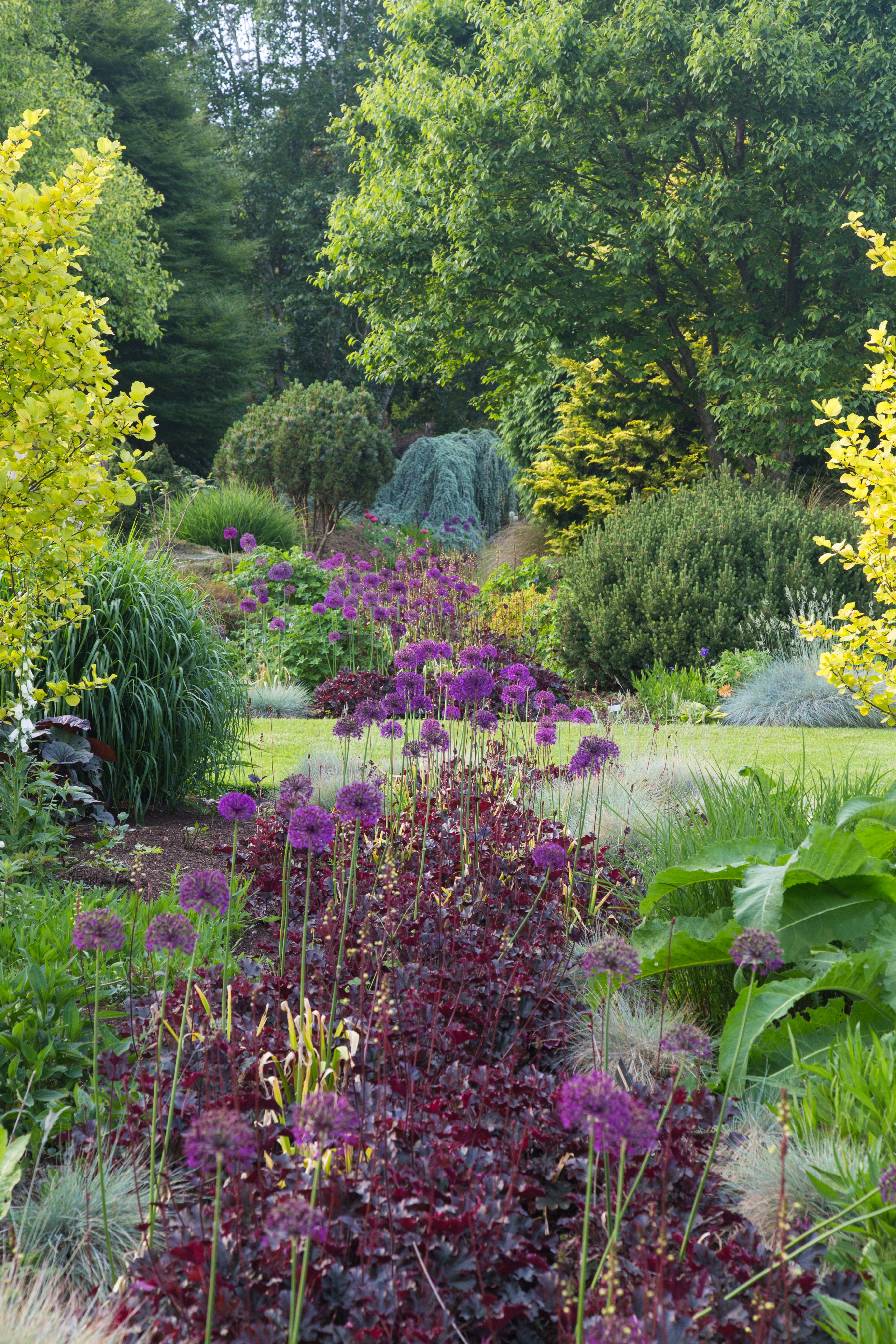
Although I had a horticultural background and inadvertently must have picked up some information for later use, I was no 6, 7, 8, or 10 year old whose ambition was to follow his father’s footsteps, nor even to go into horticulture at all. Neither my father nor I had any formal education in horticulture, so my eldest son Jason who attended horticultural college, was and is the best qualified horticulturist of us all! Horticultural education has to be helpful, but in gardening, experience counts for a lot.
This broad introduction as to how I got into gardening will make more sense within the context of “The Bressingham Gardens” on either side of the Atlantic and how the idea of using perennials with other plants in the year-round garden developed.
My own garden Foggy Bottom extends to 6 acres, and given my experience to date the concept had to been to create year round colour. The garden started with a field of grass, and our house, which my wife Rosemary and I helped to build (well I mixed most of the cement and she did the all-important pointing on the bricks). I was anxious to get on and with days getting shorter as winter approached, I sometimes dug the sticky garden under the glare of our car’s headlights.
Here I jump through the years as the garden grew, carpets of heathers contrasted with shapes and form of contrasting conifers, and gradually shrubs, trees, perennials and grasses were added to the mix. Of course Foggy Bottom was a trial garden for many of the plants we were growing on our nursery, plants which, unless pruned, increased in stature each year, and unlike perennials did not die back to the ground in the autumn/fall. I would have to learn how to keep them looking attractive to serve a long term purpose.
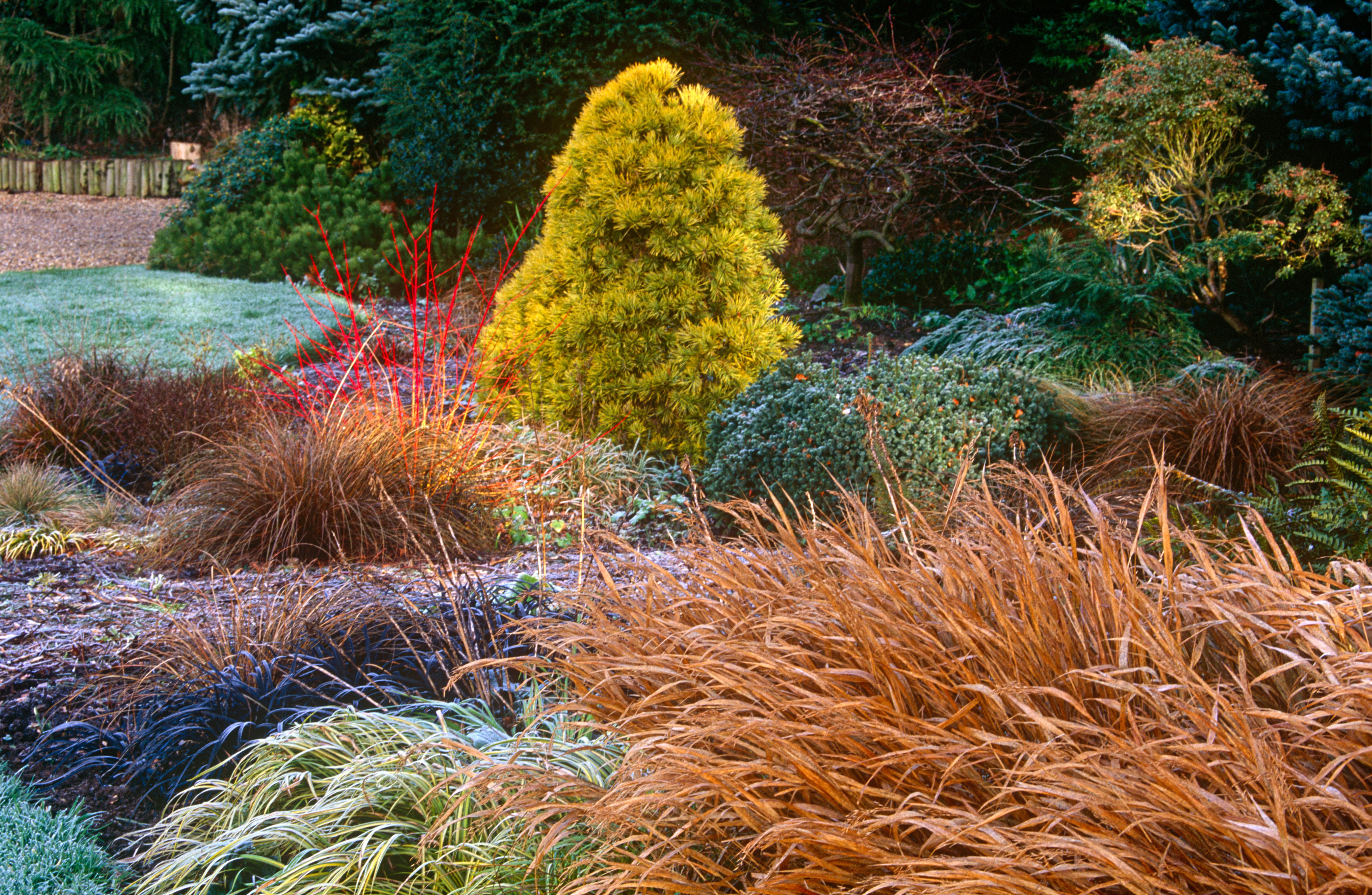
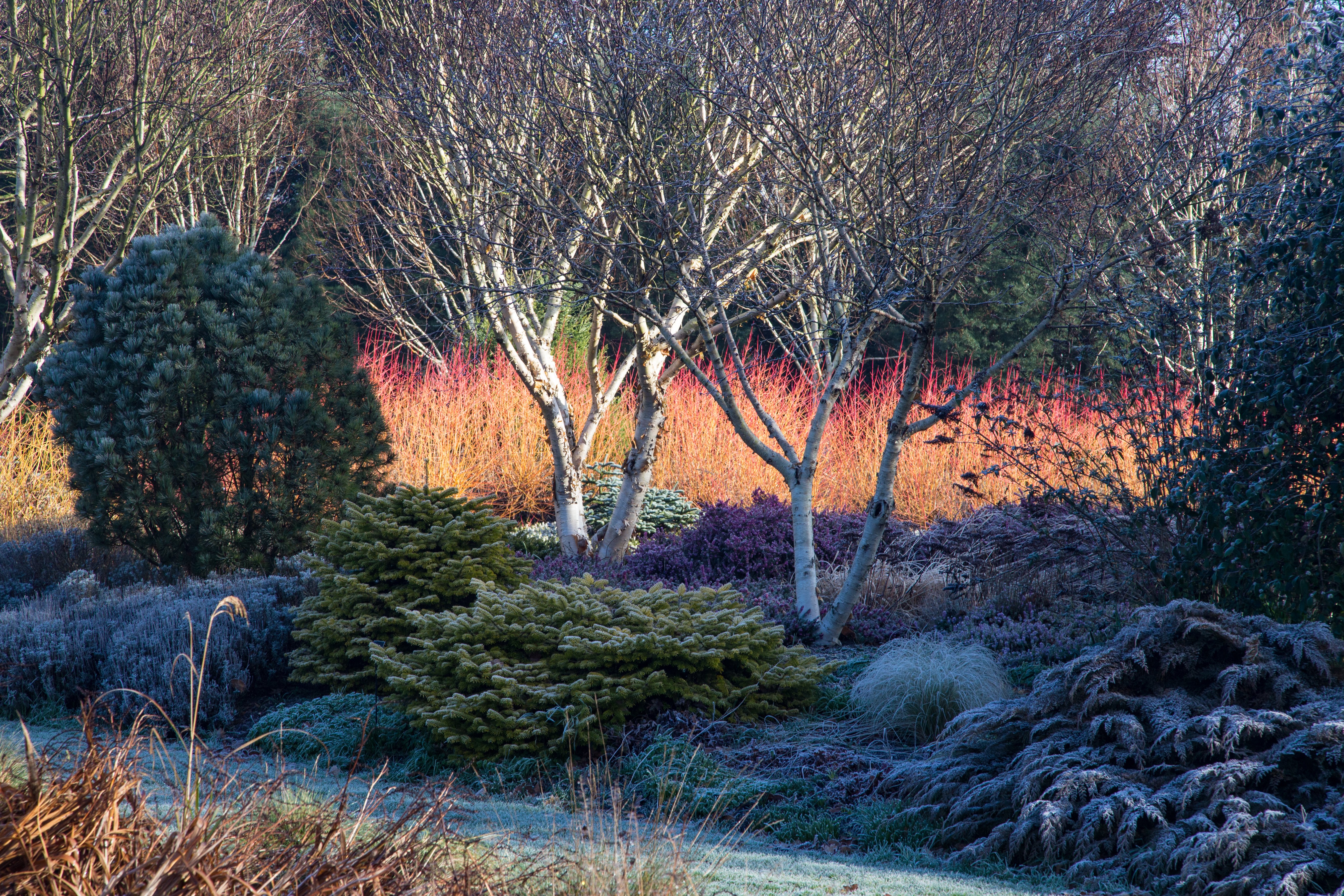
Being a nurseryman, starting to write books it was important to me to learn about plants, and how to grow them. Foggy Bottom provided a big space, but what about the majority of those with smaller gardens. Might they justifiably say “that’s all very well in a large garden like Foggy Bottom, but it (or these plants) won’t fit in our small patch.” Another challenge had arisen to show how a small garden could be designed with year-round plants.
Fast forward again, this time to the story of the The Garden of Edens…. Working with the local newspaper in 1976 I offered a ‘free’ giveaway garden of mainly conifers and heathers as a prize. The front garden chosen belonged to George and Angela Edens and it would give a ‘feelgood story’ for the local press. Planting began in the fall of 1975, completed within a few weeks and photographs taken as the garden developed.
I wrote a book, The Year Round Garden, on the project for others to follow and in 1979, as Bressingham Gardens we created a replica at the RHS Chelsea Flower Show. This was the first of the ‘giveaway gardens’ firstly in England. Later, from 1997, we planted one a year across the United States… until 2007 when….. as some of you might remember… we planted a Bressingham Garden at The Gardens at Elm Bank.
Of course we will never know for sure how successful these gardens were in getting more people to think about gardening, copying some of the ideas, and using some of the plants in their own garden. In America it was part of a programme of working with local garden centres and supported by a company that had been formed, Blooms of Bressingham North America. Apart from myself and my assistant Joe Kunkel, most of the planting and preparation was done by our partner’s staff and enthusiastic volunteers.
The Bressingham Gardens in England now constitutes 17 acres of intensely planted gardens, now all connected, with a Foggy Bottom Trail taking the visitor to the final destination of Rosemary’s Wood, and the Summer House built by Matt Bloom, one of three sons of my wife Rosemary who died in 2014, and after whom the garden is named. Some of you may have seen the Memorial Tree at the Gardens at Elm Bank kindly donated by MHS and planted in October 2016 as a memory of my wife Rosemary, who sadly died in 2014.
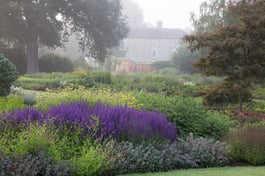
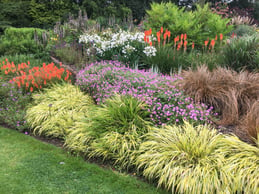
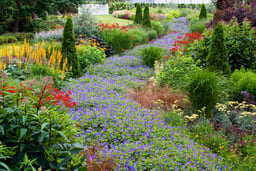
The full history of the development of the Bressingham Garden at the Gardens at Elm Bank, home of Massachusetts Horticultural Society, may have to wait, and it goes along with the chequered history of the society itself, particularly in later years when it was in danger of folding which served as the backdrop to the big year of 2007.
Planning was done several months ahead when I started to mark out the beds in the winter of 2006-2007. The area we planned to use was roughly an acre in size, included an old tennis court with a crumbling macadam surface. It was situated between Weezie’s, a popular children’s garden, and the front of the large mansion and the Italianate Garden. Local horticulturist and landscaper Paul Miskovsky had volunteered to use his machinery do the heavy work in preparing the area for planting, creating some undulations on this flat site.
Unfortunately there were some heavy rains during the preparation period which meant conditions weren’t ideal. Lessons to be learnt here in preparing well ahead, and although it looked alright, part of the garden where the tennis court had been, had poor drainage leading to some losses of our star perennial, Geranium Rozanne.
Joe Kunkel and a MHS team had done a great job of promoting this planting and a welcoming sign had been put up for the day, and over 150 volunteers were ready to help.
The volunteers of all ages (and sizes!), including a children’s group, were straining at the leash to be given a job and some had to be held back until I had a head start putting out enough plants. Although I had some idea about where certain plants might go I had no design to follow, only experience of the plants and their preferences. No pressure then!
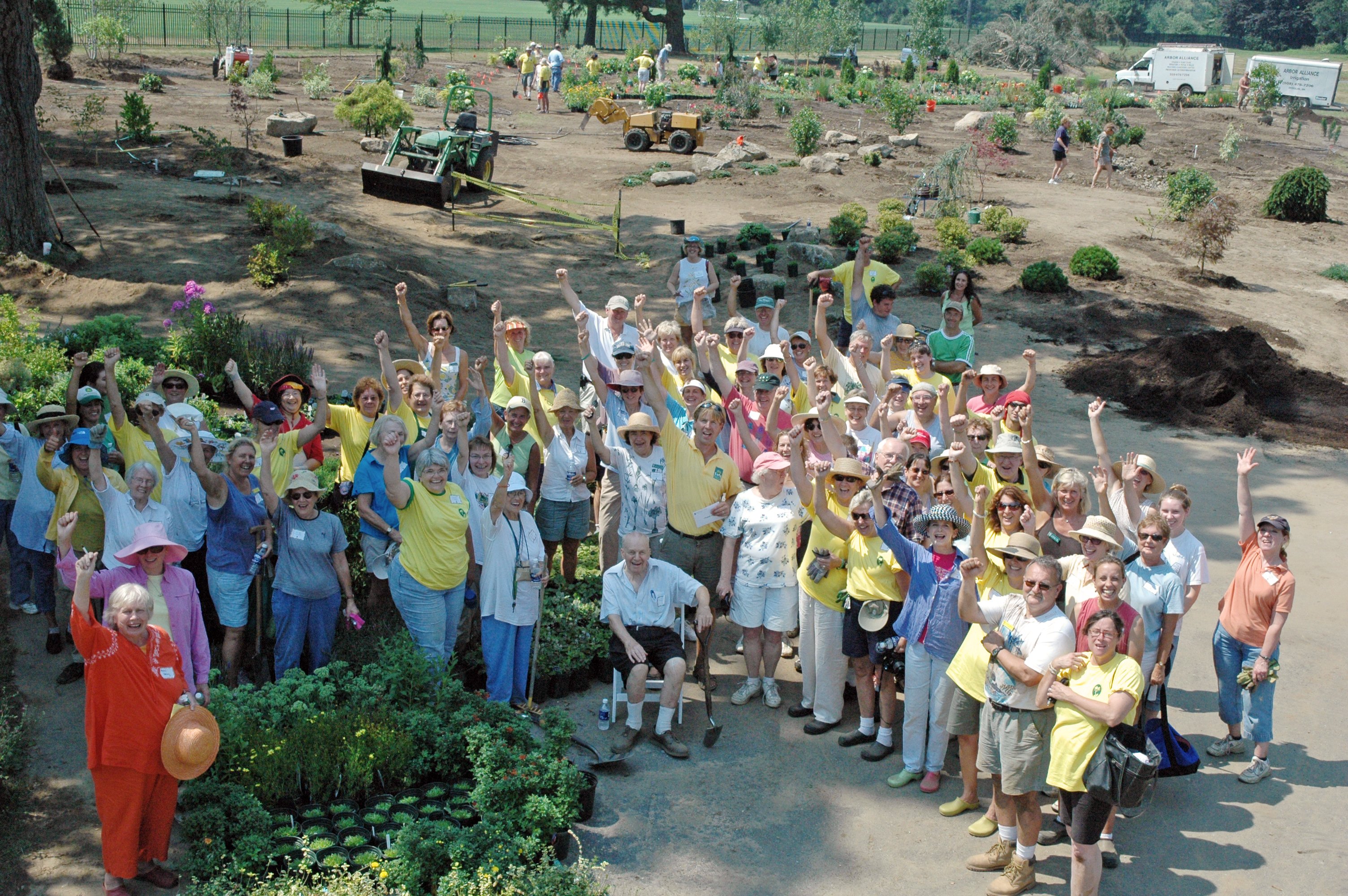
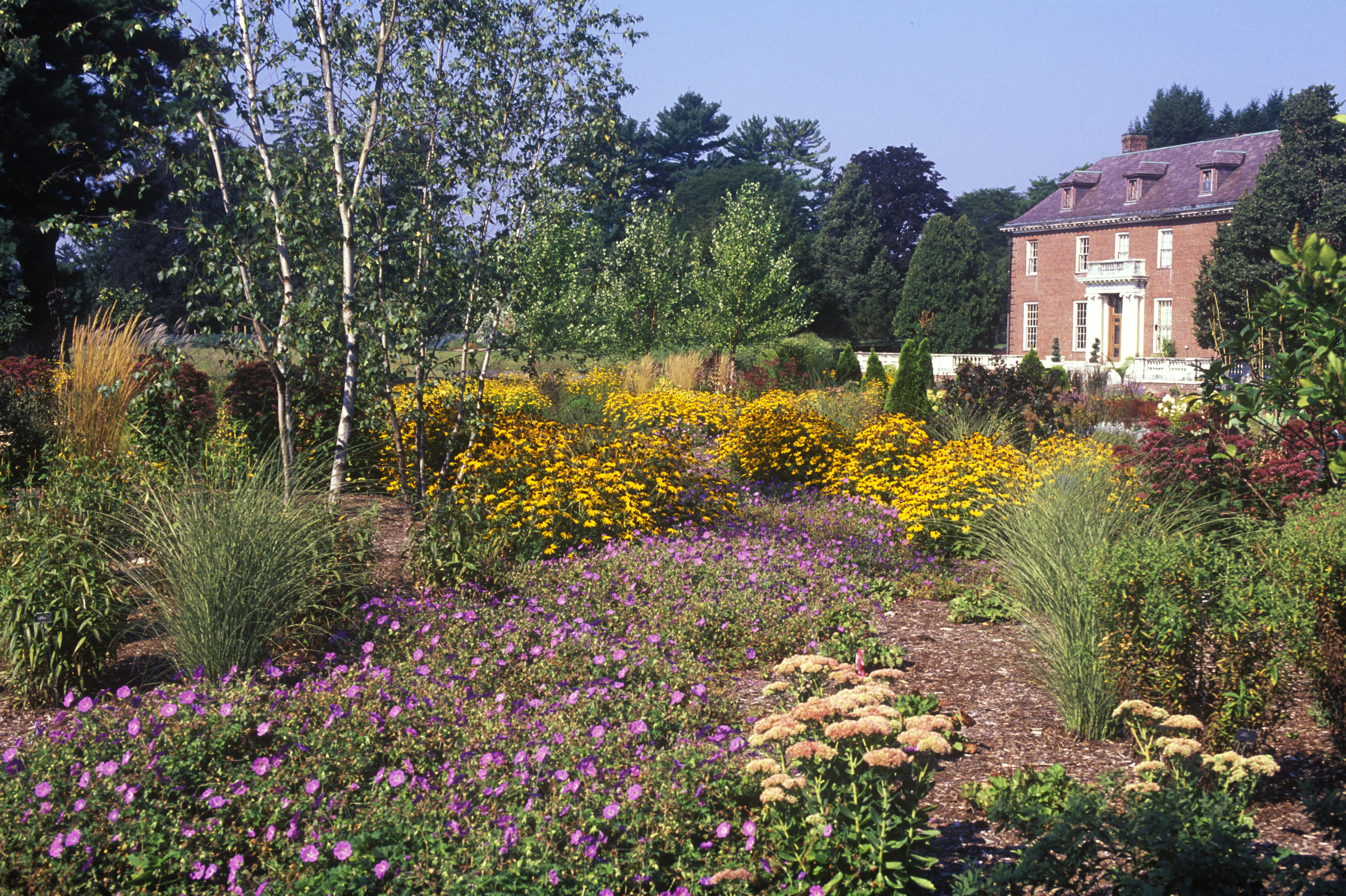
We might have chosen some different conditions, but as we all know we can’t choose the weather. I had flown in from the UK direct to Logan Airport, Boston on Tuesday 31st July 2007. Having missed the heavy rainfall, and was told this was extreme—4 inches in an hour!—I wanted to make sure that the garden was ready for the big planting day of Friday August 3rd. The next day was for heavy machinery with irrigation being installed, and Thursday as the temperature rose to 93°F, Paul Miskovsky used his digger to help get some of the tree specimens planted and we positioned a few rocks to make the site a more interesting landscape. Bob Feige was then in charge of this development for MHS and many members of the committee came to see what was happening.
Bob collected me from my hotel at 6am, and since we knew it would be a long hot day, we also knew the first hours in the relative cool would be most productive. Paul Tukey, author and then TV producer had left his home at 3am and was pivotal in helping keep the volunteers happy with educational breaks between their planting sessions. I made an entry in the evening of that day, when the temperature reached 95°F, “an amazing sight to have staff, trustees and member volunteers, many well over 70, the oldest 93, all helping to plant in the heat.” Young 6 to 12 year old Master Gardeners were shown how and where to plant. The enthusiasm can be seen from the photographs taken on the day, and hopefully those involved will look back to remember the occasion. Still very fresh in my memory I put a photograph in my book, Bloom’s Best Perennials and Grasses, suggesting that it would be great to “bottle up” that enthusiasm and spread it around.
But we all know we can’t expect to keep up that level of enthusiasm, and although we can build instant gardens, as gardeners we also know this is not the way most people garden, or might want to garden. True gardening is a much slower process and every garden, or part of a garden has its own challenges and it’s own way to success. The model outlined to you from our experience in developing our gardens at Bressingham England and elsewhere is in contradiction to the instant garden at the Gardens at Elm Bank. Here there were losses due to areas of poor drainage, as always some plants succeeded and others failed (although not too many). Plants have to be accommodated for growth, weeds need to be kept under control, sunny areas over time become shady and tree roots can provide competition for moisture. That’s gardening!
In Foggy Bottom we are now regularly moving or removing plants. We want to keep some vistas open to view, some key plants not to be smothered, and new areas are created to use different plant combinations. A garden has to be helped to ‘grow old’ gracefully. Primarily because of COVID, I haven’t visited the Gardens at Elm Bank since 2018 and some thinning and replanting needs to be done.
Hopefully the Bressingham Garden at the Gardens at Elm Bank continues to serve as not only a place to enjoy the colour and seasonal changes, but also as a place to learn… as our Bressingham Garden is in England. What plants have succeeded? What is the best time to see them? Sun? Shade? Where might they grow in my garden? And maybe… where can I get them?
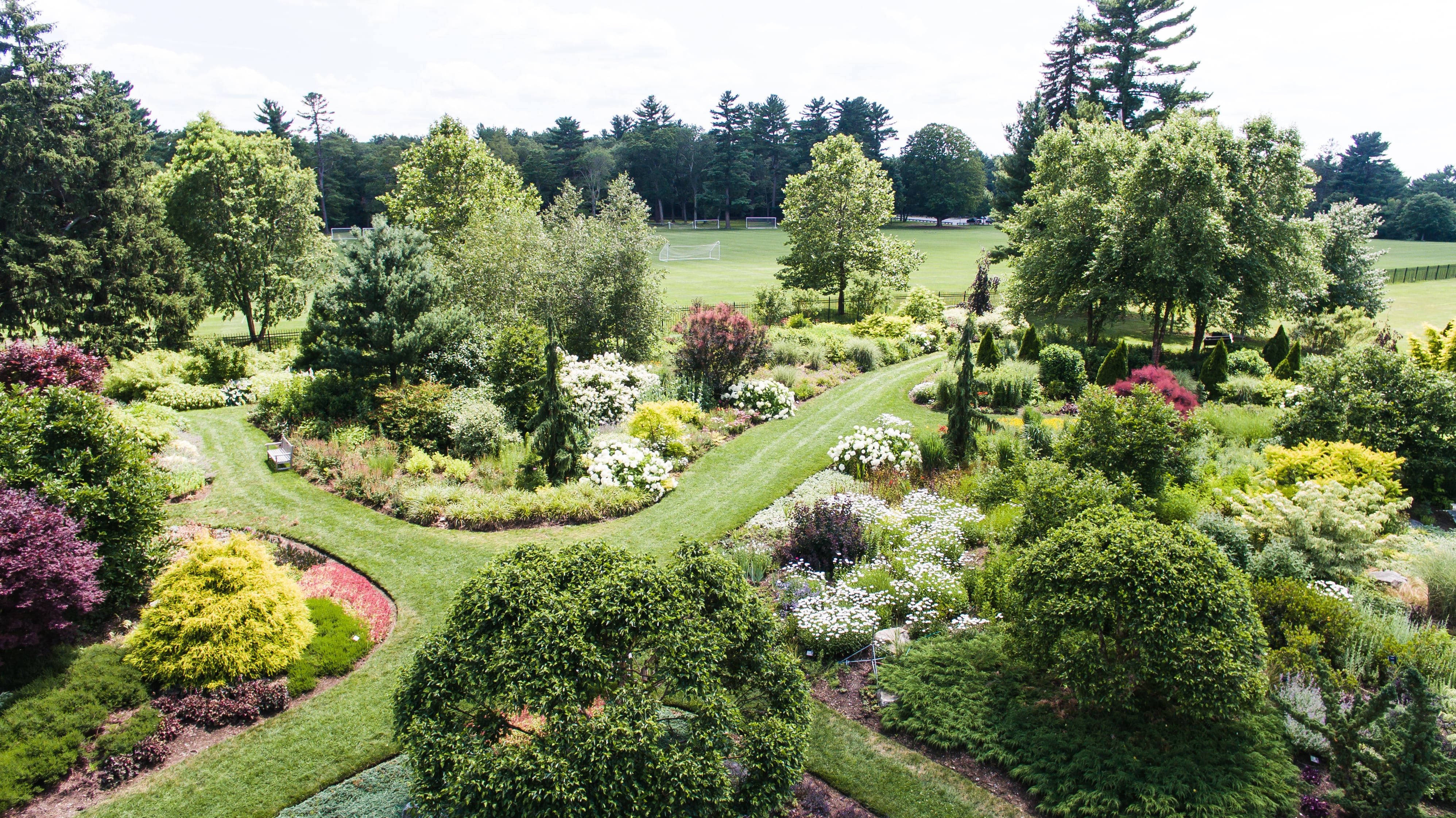
©2025 Massachusetts Horticultural Society. All rights reserved.